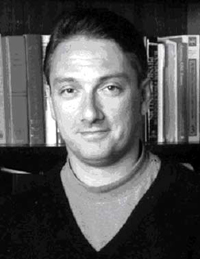 |
Eric Shaqfeh
Stanford University
Hougen Visiting Professor
Eric Shaqfeh received his B.S.E. in Chemical Engineering from Princeton University along with a program degree in Physics. He earned his M.S. and Ph.D. degrees in Chemical Engineering from Stanford University under Andreas Acrivos. In 1986 he received a NATO Postdoctoral Fellowship to work in the Department of Applied Mathematics and Theoretical Physics at Cambridge University with Professors E.J. Hinch and G.K. Batchelor. He was a member of the technical staff at AT&T Bell Laboratories from 1987 until 1990, when he joined the Department of Chemical Engineering at Stanford University. He now holds a dual appointment as Professor of Mechanical Engineering at Stanford and serves as Associate Chair of Chemical Engineering.
Professor Shaqfeh's accomplishments have been recognized through many professional awards, including the 1989 François N. Frenkiel Award for Fluid Mechanics from the American Physical Society, a Presidential Young Investigator Award in 1990, a David and Lucile Packard Fellowship in Science and Engineering in 1991, a Camille and Henry Dreyfus Teacher/Scholar Award in 1994, the 1994 W.M. Keck Foundation Engineering Teaching Excellence Award, and the 1998 Curtis W. McGraw Award from the American Society of Engineering Education. His professional lectureships include the Thiele Lectureship at Notre Dame in 1999, the 2001 Van Ness Lectureship at RPI, the 2003 Merck Distinguished Lectureship at Rutgers in 2003, the Corrsin Lectureship at Johns Hopkins in 2003 and the 2004 Katz Lectureship at CCNY. He was inducted as a Fellow of the American Physical Society in 2000.
Hougen Lectures, Spring 2004
PROGRESS AND PROSPECTS IN UNDERSTANDING SINGLE MOLECULE POLYMER DYNAMICS
Thursday, January 22 at 4:00 p.m. (refreshments at 3:45 p.m.)
Room 1800 Engineering Hall
Within the last decade, the use of video fluorescence microscopy to visualize DNA chains in flow as pioneered by Chu and co-workers is revolutionizing the field of polymer solution rheology. Rather than simply postulating coarse-grained models for a chain in various "strong" or "fast" flow fields (and then examine the resulting stresses in comparison to measured values), researchers can now directly examine the configurational statistics of a molecule in flow far from equilibrium. Combining these experimental studies with Brownian dynamics where an assortment of molecular models can be examined, provides an extremely powerful tool to probe the physics in the molecular dynamics.
I will review the state of research in single DNA dynamics studies in bulk flows including extensional, shear, and mixed flows and I will discuss outstanding questions that have developed in this research. I will then introduce and discuss a few relatively new applications of single molecule microscopy involving DNA dynamics in micro-post arrays and in non-dilute solution. These examples indicate that the applications of examining polymer dynamics "one molecule at a time" (to quote Ron Larson) are burgeoning and will play an increasing role in the study of polymeric liquids in the foreseeable future.
TURBULENT DRAG REDUCTION MECHANISMS BY FIBER AND POLYMER ADDITIVES AS DETERMINED FROM LARGE SCALE SIMULATION
Thursday, March 4 at 4:00 p.m. (refreshments at 3:45 p.m.)
Room 1800 Engineering Hall
Since the 1948 observations of drag reduction by Toms, the molecular mechanisms by which the drag in a turbulent channel flow is reduced have been the subject of a great deal of theory. I will focus this talk on the mechanisms of turbulent drag reduction by polymer and fiber additives as elucidated from large-scale numerical simulation of both turbulent channel flow and developing boundary layer flow. In particular, the precise mechanisms of energy transport in and around the streamwise vortices and associated velocity "streaks" will be examined via a statistical framework. I will examine the following questions in detail:
What types of flows create large polymer and fiber stresses in wall-bound turbulent flows, and are these the same for both additive types?
What effects do intramolecular hydrodynamic interactions have on the polymer dynamics and do these affect the polymer stress production as well as drag reduction?
In which types of flow is energy stored in polymer configuration and in which types is it released? How does this affect the near-wall structures?
I will focus on universal elements as well as differences in the simulated drag reduction mechanisms of polymers and fibers. Moreover, I will demonstrate that the so-called High- and Maximum-Drag Reduction states (HDR and MDR) are turbulent states that are maintained by the release of stored energy in polymers; therefore polymer stresses maintain this turbulence. These states do not appear to be attainable with fibers alone. Three new algorithms for the polymer, fiber, and fluid dynamics are introduced to accomplish the goals of this study. The advantages of each of these codes will be discussed in light of our ultimate objectives.
